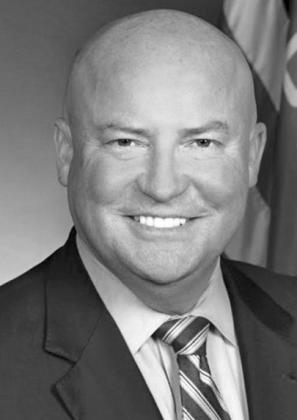OKLAHOMA CITY – In last week’s column, I wrote about a recent study commissioned by state Rep. Judd Strom and Labor Commissioner Leslie Osborn. They examined what other states are considering in extending the time in which young people can work.
In a disturbing trend nationally, several other states’ lawmakers have stripped important protections for young people that prevent extended work hours in the evenings. This move to allow young people to work longer hours over getting an education statistically locks them in a lifetime of the same low-skill, low-wage jobs they work as young people instead of elevated earnings tied to educational attainment.
To review last week’s column, including Oklahoma laws which detail how child labor functions, go to https:// tinyurl.com/childlaborpoor1.
Digging deeper into Oklahoma’s child labor laws, a minor under 16 years may work up to three (3) hours on school days (Monday to Friday), up to eight (8) hours on non-school days (days in which attendance is not compulsory), and up to 18 hours in a school week. Additionally, they may work up to 40 hours in non-school weeks if school is out for the entire week and attendance is not compulsory, and they may not work overtime.
In the traditional school year, Tuesday after Labor Day to May 31 of the following year, a minor under 16 may not work before 7 a.m. or after 7 p.m. If the employer is not subject to the federal Fair Labor Standards Act, a minor may work until 9 p.m. throughout the year on days followed by a non-school day.
From June 1 to Labor Day, traditional summer, a minor under 16 years may not work before 7 a.m. or after 9 p.m. There are no restrictions on the hours or times once the minor reaches 16.
According to the federal Fair Labor Standards Act, there are 17 hazardous occupations in which the minor must be at least 18 years of age to be employed, even if the parent owns the business. Go to https://www.dol.gov/ general/topic/youthlabor/hazardousjobs to learn more about these jobs. You might be surprised at some of these job prohibitions under federal law.
There are “break” laws for minors under 16. A 14- or 15-year-old must be permitted a one (1) hour cumulative rest period for eight (8) consecutive hours worked or a 30-minute rest period for five (5) consecutive hours worked. Employers are required to document break periods for minors under16years.Oncetheminorreaches 16 years of age, there are no requirements for breaks or lunches.
The U.S. Labor Department reports there has been a 69% increase since 2018 in the number of children being employed illegally nationwide, and it has more than 600 child labor investigations underway. Officials said they are particularly concerned about the potential exploitation of migrants who may not even have a parent in the United States.
TheEconomicPolicyInstitutenoted several states recently proposed or enacted laws extending the hours 14and 15-year-olds can work. Both New Jersey and New Hampshire passed suchlawsin2022.TheNewHampshire law lowered the age for minors to bus tables where alcohol is served from 15 to 14 and increased the number of hours per week 16- and 17-year-olds can work. Bills have proposed paying young workers below a state’s minimum wage and allowing them to do more hazardous jobs.
Oklahoma should not follow suit with what these other states are implementing. Next week, I will review research into the harm caused by diminishing the restrictions placed on young people in the workforce.
The Oklahoma Institute for Child Advocacy was established in 1983 by a group of citizens seeking to create a strong advocacy network that would provide a voice for the needs of children and youth in Oklahoma, particularly those in the state’s care and those growing up amid poverty, violence, abuse and neglect, disparities, or other situations that put their lives and future at risk. Our mission statement: “Creating awareness, taking action, and changing policy to improve the health, safety, and well-being of Oklahoma’s children.

